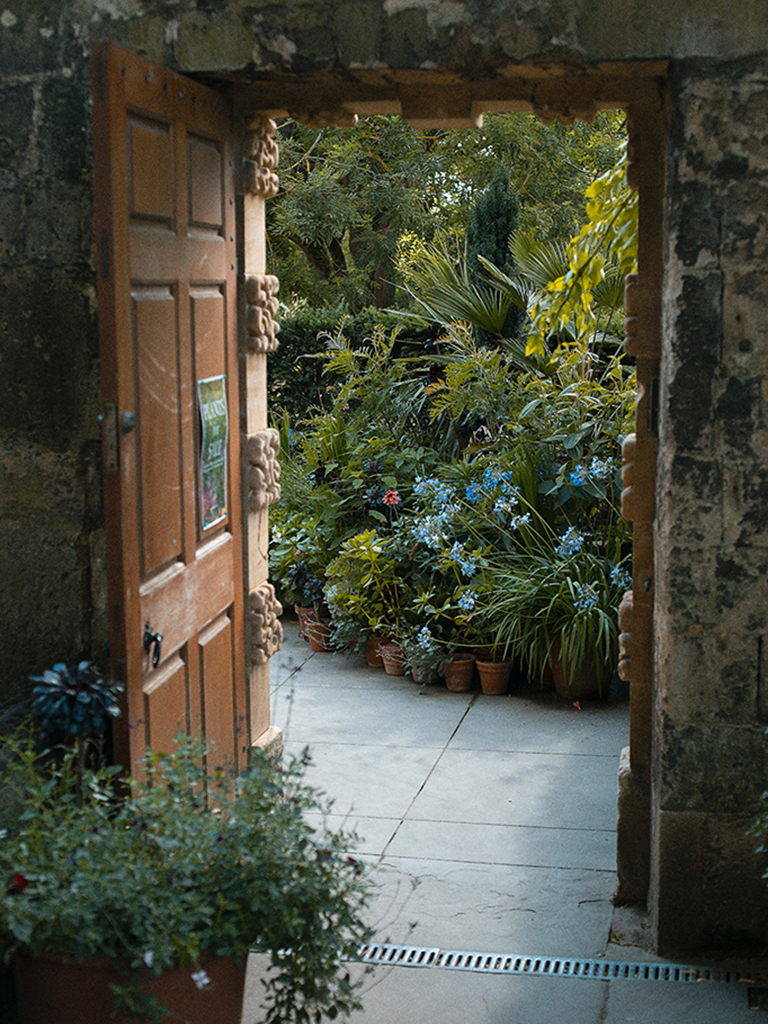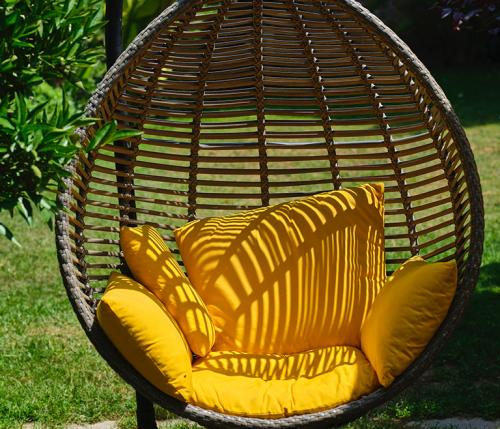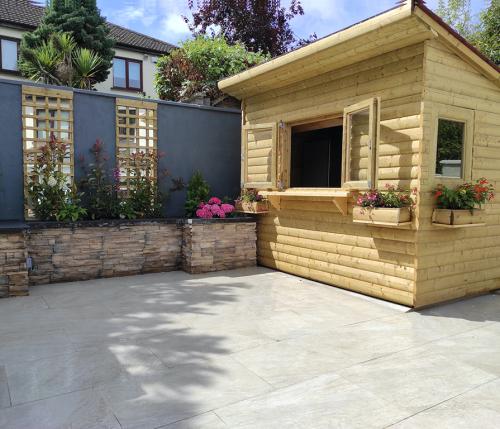Your garden is an extension of your home. It’s often a place of escape from the hustle and bustle of busy home life; a secluded and tranquil outside space that is purely yours. Therefore, when creating your ideal home, it’s a good idea to include your garden when considering your design aesthetic and lifestyle needs. Your garden should serve as much use to you as your home does, and evoke just as much - if not more - joy.
Gardens often need a feature, a talking point, or a centrepiece that defines what you want it to be used for. This can take many forms, so when you’re considering garden structures, features, and elements, consider how they align with the rest of your home’s environment and design style, as well as your budget. With careful planning, you can create an outdoor oasis perfect for whatever you want, whether it’s hosting gatherings and providing entertainment, enjoying nature, relaxing on some comfortable furniture, or taking up a hobby such as golf in an outbuilding, studio or garden room.
Here is a short guide on how to choose the right garden ‘elements’ to perfectly suit your home and lifestyle.
Assess your existing garden space
Before making any additions, take time to analyse your current garden and its available space. Note the size, shape, existing hardscaping, planting beds, sunlight patterns, views and the facing direction.
Identify how you want to use the garden and any problem areas needing improvement. This will help guide your choices more effectively and strategically.
Consider the following:
- Garden size - Large or small, formal or cottage style? What structures make sense?
- Layout - Note pathways, decking, patios, and dead zones. How could flow and space be optimised?
- Existing structures - Worth keeping or removing? Do they align with your vision?
- Soil quality and drainage - Must this be addressed before adding structures or plants?
- Sunlight patterns - Are there shade issues needing resolution? Where is the best sunshine for sun-loving plants?
- Views - Are there attractive views to frame or unsightly ones to screen?
- Privacy needs - Are screening plants, verandas, pergolas or fencing panels needed?
Evaluating these aspects will reveal opportunities and challenges to inform your garden feature plans.
Complement your home's architecture and materials
Your home's design - external and internal - should be reflected in the garden for a cohesive, consistent and unified look. Echo architectural features, building materials, and colour schemes when choosing the features you want in your garden.
- Styles - A modern home calls for sleek contemporary elements like decorative concrete, stone, steel, or glass. A cottage garden needs softer, more ornate features like wooden garden arbours, rustic trellises, and painted furniture. Some homeowners prefer the low-maintenance option of having artificial grass gardens that look stunning with block paving pathways and feature fireplaces.
- Materials and colour schemes - Use the same stone, wood, or brick types on patios, walls, and outbuildings. Adopt the same paint colours and textures for garden sheds, pergolas, planting pots and any garden furniture.
- Shapes and lines - Mirror window shapes, roof angles, and other lines in custom structures. Repeat circular, linear or geometric patterns.
Harmonising the garden with the property results in a seamless indoor-outdoor flow.
How to choose the right garden features for your home
Here is a short guide on how to choose the right garden "elements" to perfectly suit your home and lifestyle
Consider how various elements will be used
Assess how you want to enjoy your garden and entertain visitors. Do you want it to be a frequented social gathering space or a place that is best served for you to enjoy alone? This determines which structures and amenities take priority given your budget and space.
Possible uses include:
- Alfresco dining
- Lounging and sunbathing
- Children's play areas
- Growing flowers, herbs, fruits and vegetables
- Relaxing with a good book
- Yoga and exercise
- Pet areas for playing and bathing
- Entertaining guests outdoors
- Storage for gardening supplies
Elements that facilitate intended activities like verandas, patio dining sets, pizza ovens, sinks, cosy seating, outdoor kitchens, and play areas should take precedence.
Choose features to enhance your garden environment
Certain structures and elements can maximise your garden's natural beauty while avoiding many of the common challenges homeowners face when using their outside spaces.
Consider the following:
- Sun and shade - Position gazebos, pergolas, water features, outbuildings, and plants appropriately to optimise sunny patios and shady relaxation spots, if these are of the highest priority to you.
- Views and privacy - Frame the views and natural light exposure with windowed garden buildings oriented to enjoy them. Strategically place screening plants, walls, and fences to increase privacy.
- Weather protection - Add awnings, windbreaks, shade sails, and enclosed patio rooms to shelter during inclement weather.
- Soil conditions - Raised garden beds improve drainage and accessibility for plantings, while separate greenhouses can be positioned for optimum heat and sunlight.
- Accessibility - Level pathways, ramps, railings, and slopes help navigate changes in elevation.
Over time, it’s reasonable to assume your garden setting will change, evolve and adapt as your life changes. Assessing environmental factors will help guide your choices.
Consider customised garden rooms
Garden rooms are fully equipped, functional, standalone structures that add living or storage space. They can also provide a much-needed getaway for those who want a dedicated, private space to work in or enjoy a hobby.
Options include:
- Garden office - Work remotely surrounded by nature
- Art or music studio - Pursue hobbies without leaving home
- Gym or yoga studio - Private exercise space
- Guest suite - Accommodate visitors in comfort
- Pool house - Utilitarian space for pool gear
- Garden bar - Entertain without entering the house
- Cinema - Get the big picture experience by indulging in a good film
- Storage shed - Keep outdoor equipment organised
- Outdoor kitchen - Cook alfresco dining staples for guests
- Garage - Protect vehicles and store tools
Garden rooms like the above lend purposeful new dimensions to the garden while freeing up space inside the home. You’ll be surprised at how much more freedom you can give yourself by dedicating a space outside to a specific purpose.
Set a realistic budget
Garden elements range widely in price, which is why it’s important to set a realistic overall budget before choosing specific pieces. Prioritise essential structural elements like patios, pathways, and retaining walls first. Then, you can allocate leftover funds to decorative items like sculptures, urns, and furnishings.
Specific purpose-built garden rooms may require considerably higher upfront costs, so determine the need for these features alongside the urgency to fix the garden’s condition.
Get quotes on custom structural projects to avoid exceeding your budget. You may also benefit by scouring second-hand retailers or charity shops to find decorative items and furnishings for better prices than buying new ones. With careful spending, you can achieve your garden vision affordably.
A successful garden balances aesthetics with practicality. Select the most important structures and elements purposefully to enhance both form and function. Don’t forget that your garden requires upkeep and maintenance, so keep this in mind when considering your choices.
With proper planning grounded in your home's architecture, environment, lifestyle needs, and budget, you can craft a truly personalised outdoor living space to enjoy for years to come.




 Workspace Design Show: 2024 UK Edition
Workspace Design Show: 2024 UK Edition  Open-air elegance: Claudio Bellini x Higold, the symphony of outdoor design
Open-air elegance: Claudio Bellini x Higold, the symphony of outdoor design  A stylish oasis for outdoor spaces
A stylish oasis for outdoor spaces  How to capture your property's best features
How to capture your property's best features